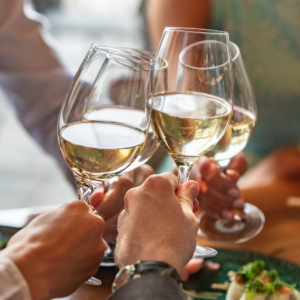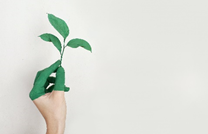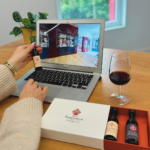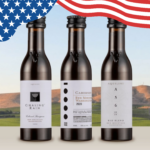The U.S. wine market: Key consumer trends and industry innovations

The wine market in the United States remains one of the largest and most dynamic globally, evolving rapidly in response to shifting consumption patterns and increasingly sophisticated marketing strategies.
For wine professionals, gaining insight into these emerging U.S. wine trends is vital in identifying export opportunities and aligning offerings with both consumer expectations and evolving regulatory frameworks.
Popular wine styles in the U.S. & changing preferences
Wine consumption habits across the U.S. are undergoing notable transformations. While full-bodied red wines were long the dominant force, there is now a marked shift towards lighter styles (white, rosé, sparkling), as well as “cleaner” alternatives such as organic, natural, and low-alcohol wines.
White wines surpassing reds

Historically, rich, oaked red wines were the preferred choice for many American consumers. However, the trend is changing, with white wines steadily gaining traction and now surpassing reds in terms of market share.
NielsenIQ data from May 2023 indicates that white wines made up 48.5% of still wine sales by volume in the U.S., compared with 45.1% for reds. One year later, white wines rose to 49.2%, and in recent months, they have exceeded the 50% threshold.
This popularity can largely be attributed to younger consumers, who tend to favour fresher, fruit-forward wines with lively acidity, in contrast to the heavier tannins typical of traditional reds. Moreover, mid-range white wines are seen as offering greater consistency and value than their red counterparts, particularly within the $10–$20 price range.
The rise of rosé and sparkling wines
In addition to white wines, rosé and sparkling wines are increasingly favoured by U.S. consumers. Rosé, which saw a substantial surge in popularity around 2010, has now become a mainstay, particularly among consumers aged 20 to 40, appreciated for its refreshing style and relaxed, sociable appeal.
Sparkling wines, including Champagne and Prosecco, are also breaking free from their traditional association with celebrations. Prosecco has experienced exceptional growth, largely due to its festive image and affordability relative to Champagne. While Champagne retains its prestige, it has experienced a decline in volume, challenged by higher pricing and intensified competition from other sparkling alternatives.
Natural, organic, and sustainable alternatives

Growing health and environmental awareness is significantly influencing wine purchasing decisions in the U.S. Organic and natural wines are increasingly popular, and the global organic wine market — valued at $28.5 billion in 2022 — is projected to reach $69 billion by 2030, with North America as a key contributor.
Natural wines, produced with minimal intervention and without added sulphites, continue to attract interest, particularly among Millennials and Generation X. These demographics are drawn to the authenticity and ethical values such wines represent. Generation Z is also showing increasing interest, driven by health-consciousness and environmental concerns.
In addition, moderation is becoming a major theme, with the “low & no alcohol” movement gaining traction. Improved quality in alcohol-free wines is broadening their appeal, particularly among those seeking healthier, more mindful drinking options.
Marketing trends & innovation in the U.S. wine industry
In light of shifting consumption trends and mounting competition, American wine producers are embracing innovation in various forms: digital engagement, e-commerce, sustainable packaging, and evolving distribution models all play pivotal roles in reaching a new generation of consumers.
Digitalisation and the E-Commerce Boom

The digital transformation of the wine industry has gathered pace. Online wine sales surged during the pandemic and remain robust, with alcohol e-commerce expanding from 1% to 7% of market share between 2019 and 2024.
Direct-to-consumer (DTC) sales, once undervalued, have become a cornerstone of revenue, especially among premium Californian producers who now report greater returns from subscriptions and online orders than from on-site tasting rooms.
In response, wineries are redesigning websites, simplifying payment processes, introducing digital loyalty schemes, and offering mobile apps to reach broader audiences. Chatbots serve as virtual sommeliers, guiding customers through selections in real time.
Digital marketing continues to thrive, with SMS campaigns proving particularly effective — boasting engagement rates up to 35 times higher than email. Many wineries now incorporate SMS into their multichannel strategies, always adhering to data protection and consent regulations.
Social platforms such as Instagram, Facebook, TikTok, and LinkedIn have become indispensable for connecting with Millennials and Gen Z. This digital engagement facilitates more personalised interaction and opens new doors for international producers entering the U.S. market.
Sustainable packaging & emerging formats
Packaging innovation is also at the forefront. Sustainability is now a primary concern, particularly among younger consumers. Lightweight, eco-friendly alternatives such as aluminium cans and Bag-in-Box (BiB) are gaining traction.
Previously associated with lower-quality wine, these formats are now seen as practical and sustainable: they reduce carbon emissions, offer better price-per-litre value, and are well-suited to casual, portion-controlled consumption. A study found that 3L BiBs produce 84% less carbon emissions than the equivalent in traditional glass bottles.

Another rising format is Vinottes — miniature bottles (2, 4, or 5 cl) made of recyclable, shatterproof PET. Developed by Vinovae, these sample-sized bottles offer convenient, on-the-go tasting and are now widely available in the U.S. through platforms such as e-tasting.com. Their popularity is growing among wine clubs and digital tasting experiences.
Small formats and canned wines meet the needs of consumers who prefer a single glass without opening a full bottle. These practical, sustainable solutions align with contemporary, responsible consumption trends.
Conclusion: A market of opportunity for global wine professionals
The U.S. wine market is entering a new era, characterised by demand for lighter, more sustainable, and more innovative wines. At the same time, the sector is being reshaped by digital technologies and shifting consumer values.
For international producers, these developments present significant opportunities. There is robust demand for white, rosé, sparkling, and organic wines — categories that align well with the offerings of many European and global wineries seeking to expand.
However, emerging tariffs and regulatory complexities should not be overlooked. Market agility and informed strategy will be crucial.
Success in the U.S. increasingly hinges on investment in digital platforms, compelling brand storytelling, commitment to sustainability, and an unwavering focus on customer experience. A strong digital presence and messaging that reflects local values — health, convenience, and environmental responsibility — are now essential differentiators.
In summary, the United States continues to offer vast potential for those wine professionals prepared to evolve, engage, and innovate.




